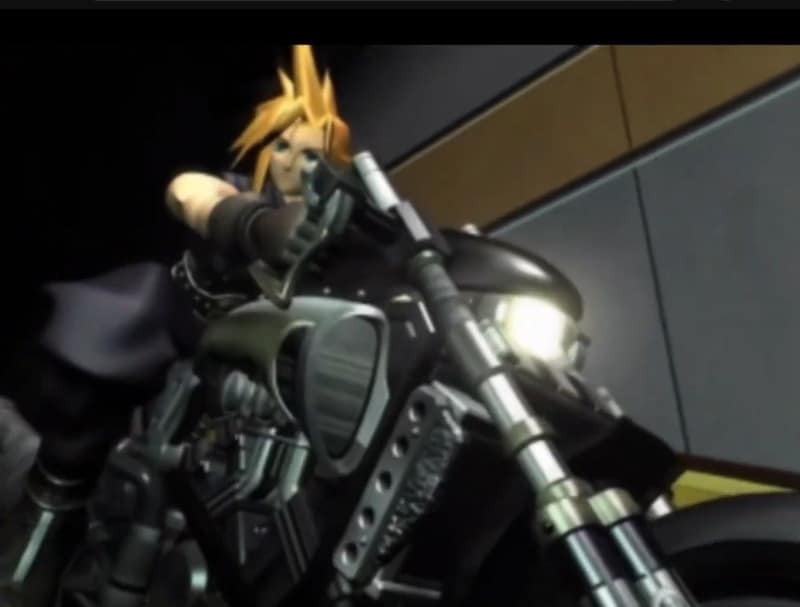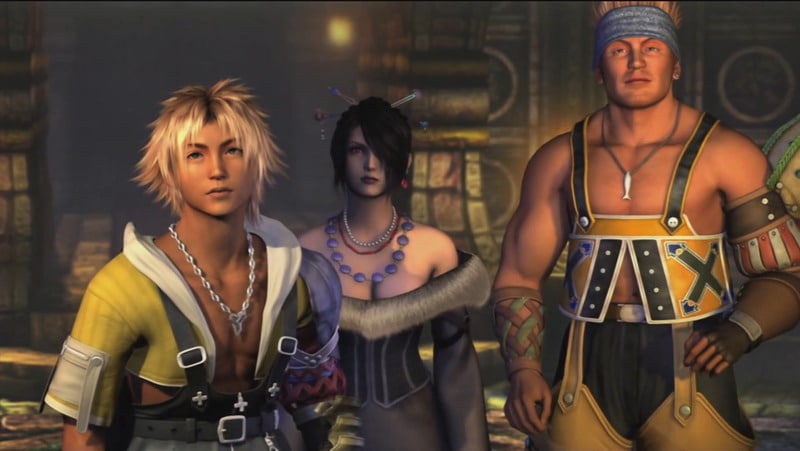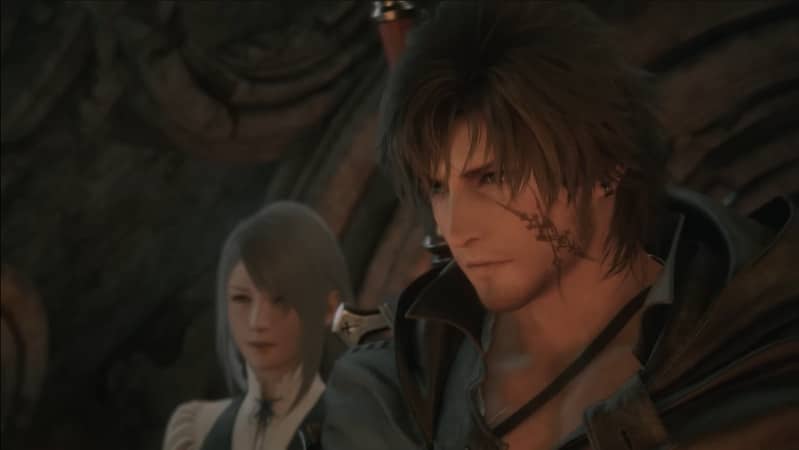For decades the Final Fantasy series has spurred the imaginations of audiences worldwide by creating all kinds of fantastical worlds and characters, and the influence and importance of the series can be felt in every entry. Because of series creator Hironobu Sakaguchi’s self-admitted distaste for sequels, there is rarely continuity between the games, making most of them good starting points. Follow along to find the one that is right for you.
Final Fantasy Begins a Legend

Many may look at the original Final Fantasy and see an old, dated, RPG that does not hold up to modern standards. This is certainly a valid criticism that may put off players in the current year, as the game has a simplistic narrative, combat that lacks quality-of-life features, and a lot of grinding. The grinding may be something that is immediately off-putting, as the player is expected to fight random encounters to obtain money to purchase equipment before the adventure even properly starts. However, even if these criticisms are valid, there are plenty of interesting and unique ideas that Final Fantasy has that make playing the game worthwhile for those willing to accept the more dated elements.
While the story is simplistic, it still stands out as the main antagonist, Chaos, has a plot that can only be described as wild: His human form dies at the beginning of the game, but his corpse travels to the past and reincarnates in the form of a demon that will change history to rule the world. The grinding can also be mitigated in a variety of ways, and the most notable one is the Peninsula of Power location that enables the player to fight enemies that give high EXP. In addition, this game has been remade a number of times, allowing players to experience it with more quality-of-life features. This game is easily appreciable with the right mindset.
Final Fantasy II Instantly Divides Fans
Final Fantasy games are often divisive on release, as each game has a very unique flavor that differs it from prior entries. This was true as early as the second game, which used a leveling system in which you increase specific stats by performing actions related to that stat. For instance, attacking increases your Strength stat, and dodging enemy attacks increases your Agility stat. This is an interesting idea for a leveling system, but one that most fans tend to hate due to how tedious it can be.
Despite this, Final Fantasy II does have its defenders. Many people praise how ambitious its story is for an NES game, in which its main characters are orphaned by an evil emperor’s attack. The main character Firion’s adventure takes a lot of twists and turns that make it engaging even to this day. It even starts the player in a battle that they have no chance of winning- An exciting introduction that establishes high stakes. In addition, the most recent release of the game, the Pixel Remaster version, fixes a lot of the issues that the original game had. Final Fantasy II is undoubtedly a black sheep, but that is also exactly what makes it worth playing.
The NES-era’s Final Final Fantasy
Like Final Fantasy II, Final Fantasy III throws the player into the action immediately, as the main characters, the Onion Knights, are investigating an enigmatic cave while the earth violently shakes around them. This kind of opening that throws the player directly into the action would become a staple of Final Fantasy, defying how many other RPGs start their plots off slow. After finding the Crystal of Light, in this cave, the four Onion Knights learn of their destiny to save the world and embark on their quest.
Final Fantasy III is easily the most beloved of the NES Final Fantasy titles. It takes everything that was good about the first two games and makes as many improvements as it can. It is still an NES game with plenty of dated elements, but its improvements from its predecessors are immense. As always, remakes of the game exist that further sand off the rough edges of its time, which will undoubtedly help players find their love for this game in the current year. Final Fantasy III is a great sendoff to the NES and is among the best RPGs for the console.
Final Fantasy IV Shoots for the Moon
With the Super Nintendo Entertainment System’s greater technical power came a bigger and better RPG in Final Fantasy IV. The Dark Knight Cecil begins his adventure in the midst of slaughtering enemy forces that can barely defend themselves and questioning the orders the king gave him to do so. After a short mission in which the king tricks him into burning down a village, he defects from the army to protect the village’s sole survivor, a girl named Rydia. The drama and character relationships are at a height that just could not be reached with the limited power of the NES.
Final Fantasy IV is what many consider to be the first great Final Fantasy game. Its numerous improvements to gameplay cause it to hold up very well, with only aspects such as a high random encounter rate causing it to feel dated in any way. In addition, the improved graphics make the series’ character designer Yoshitaka Amano’s artwork come to life in a way they just hadn’t before. While some may criticize certain aspects of the plot, such as dramatic moments being undercut, Final Fantasy IV has earned its place as a codifier for what the series to come would try to emulate.
Final Fantasy V Does its Job
Where Final Fantasy IV began with grand and gritty drama, the introduction Final Fantasy V presents its player is far more humble. A man named Bartz investigates a fallen meteor, and in the process saves a Princess named Lenna. They, and a few others they happen to meet, go on an adventure to seal away a villain named Exdeath. One other noteworthy aspect of the narrative is in the antagonist Gilgamesh, who has appeared in various other Final Fantasy games as a multiverse traveler.
One of the most noteworthy elements of Final Fantasy V is its Job System. This was introduced in Final Fantasy III, but Final Fantasy V is where it really shines. The player has the freedom to customize their characters with different Jobs that change how they play in battle. As a result, Final Fantasy V is praised as having some of the most freedom in how the player wishes to progress through the game.
The World Changes with Final Fantasy VI
Final Fantasy VI marks a big change in setting from past games: While the worlds of the first five games were primarily influenced by medieval fantasy, Final Fantasy VI takes its influence more from works of Steampunk. This is immediately from the game’s opening moments, in which the protagonist Terra is forced to pilot a small mech that is powered by magic before being rescued by a group of rebels. These rebels are determined to fight the evil empire that is destroying mystical creatures called Espers for their own gain. Terra’s journey through this strange world is filled with mystique, intrigue, and even some strange phenomena such as a Ghost Train.
One cannot talk about Final Fantasy VI without bringing up its true star: Its main antagonist, Kefka. Kefka’s jester-like appearance and goofy attitude may cause people to dismiss him as a comic relief villain at first glance, but in reality, he is one of the most menacing forces in the entire Final Fantasy franchise. His narcissistic nihilism begets the most despicable deeds as he quickly becomes a huge threat. His childish demeanor contrasts with the sheer devastation he is willing to cause to the world and its people, and he is by far the most memorable character in the game.
The Titanic Influence of Final Fantasy VII

There are few games in existence that are as renowned as Final Fantasy VII, the first entry released for the PlayStation and the first entry to use 3D graphics. The introduction to this game involves the mercenary Cloud Strife destroying a power plant to help an eco-terrorist group save the planet. If Final Fantasy VI’s steampunk world was a departure, Final Fantasy VII’s anachronistic cyberpunk setting feels like a passage to a completely different type of world design. Cloud’s journey in the city of Midgar eventually takes him straight to the top, where he has to confront the evil Shinra Corporation’s executives. The story is only just starting at this point, though, as it soon pivots to trying to stop Cloud’s former war buddy Sephiroth from his malevolent goals.
There is a lot to unpack with Final Fantasy VII, as it is by far the most popular game in the series and the game that made RPGs mainstream in Western regions. Aside from its grand story that is filled to the brim with insane and complex twists, it also manages to present a spectacle that no game before it had. Its 3D animations, while perhaps a bit dated today, were cutting-edge for the time. Its remake takes the spectacle even further and introduces a more action-heavy battle system. While Final Fantasy VII Remake can be played without knowledge of the original, it does also function as a sequel to the original in certain places. This means it is recommended to play the original before the Remake series.
Final Fantasy VIII Cares (Its Protagonist Doesn’t)
Final Fantasy VIII had big shoes to fill after Final Fantasy VII set the world ablaze. Naturally, following such a popular entry meant that this one was quite a bit more divisive. Even so, its sci-fi world is one that stands out with its complex history of militaries and magic. After the lone wolf protagonist Squall Leonhart joins a mercenary group, he starts uncovering bizarre mysteries of the past that seemingly relate to him. While he may say “I don’t care” a lot, his involvement in the enigmas of the past can be very engaging to the audience.
Final Fantasy VIII is another game known for its customizability, something that is either criticized or beloved depending on the person playing. Critics will say that it is tedious to learn new spells as they have to be stolen from enemies and that it makes party members feel less unique when they all can effectively do the same things. Defenders of the system, though, love being able to build each of their characters in the exact way they want to. Regardless of which side you fall on, most can agree that another aspect of gameplay is great: The card game that functions as side content, Triple Triad, is incredibly fun.
Final Fantasy IX Returns to Roots
After VII and VIII’s settings were great departures from what came before, Final Fantasy IX acts more as a throwback to the SNES-era games and focuses on a Steampunk setting once more. It begins with Zidane Tribal, a member of a gang of thieves, using a Shakespearian-style play as a cover for a heist to kidnap the princess, Garnet. In a bizarre twist of fate, the princess actually wants to be kidnapped. With the two of them and the rest of the gang escaping together in front of a crowd of nobles who thought they were watching the play, a playful yet thought-provoking adventure across the world begins.
Despite its more cartoony art style and its more lighthearted tone than the prior games, Final Fantasy IX manages to delve into extremely serious and thought-provoking territory. It is very concerned with finding meaning in life when one is on death’s doorstep and has antagonists who are conflicted about the evil deeds (which include genocide) their superiors are forcing them to commit. The existential themes of Final Fantasy IX are often what fans cite as their favorite part of the game. Final Fantasy IX’s lighter tone sets the stage to turn its audience into an emotional wreck when things go wrong but ultimately contains an uplifting message.
Final Fantasy X Blitzes into a New Generation

With a new console generation came a new Final Fantasy, and with the PlayStation 2’s new hardware Final Fantasy X looked more beautiful than ever. Even among other games for the console, Final Fantasy X stood out; it set a new standard for video game graphics. In a world that appears to be inspired by parts of Southeast Asia, Final Fantasy X stars Tidus, a sports star known for playing the fictional sport Blitzball. Tidus ends up traveling the world on an adventure after his home city is destroyed by a strange monster.
One notable aspect of Final Fantasy X is how it changes the battle system. Combat as far back as Final Fantasy IV has used what was known as the ATB system, in which characters take their turns when a bar fills up in real time. Instead, Final Fantasy X uses the CTB system, in which the player is no longer constrained by a meter filling in real-time and instead can affect the turn order in various ways. It also allows for party members to be swapped out during battle. This combat system is one of the most popular parts of Final Fantasy X.
Final Fantasy XII has Unique Influences
Those unfamiliar with the series may be asking why Final Fantasy XI is being skipped. XI happens to be an MMORPG, thus making it irrelevant to a list of the mainline single-player experiences. Even so, Final Fantasy XII clearly took some ideas from XI, as its combat was overhauled to play more like an MMORPG’s. In addition, it also takes place in the same world as Final Fantasy Tactics, Ivalice. Despite being a game that is meant to follow up more on the traditional mainline style, it takes a lot of inspiration from an MMORPG and a Strategy RPG spinoff.
Final Fantasy XII also focuses more on an ensemble cast than a single main character. One character, Vaan, does stand out from the others though. When he infiltrates the royal palace, a series of events unfolds that results in him stealing a crystal and becoming part of a resistance force dedicated to returning the old government to power. As more conspiracies are uncovered, the adventure of Final Fantasy XII really heats up.
Lightning Strikes with Final Fantasy XIII
There is no getting around the elephant in the room with Final Fantasy XIII: It is a very linear game. This is a criticism that has been levied towards the game since its release on the Xbox 360 and PlayStation 3. This criticism is entirely subjective and some may not be bothered by the linearity, but there is no denying that this is a problem for many fans of the game.
When the linearity is put aside, though, there are some more interesting tidbits to look at. The story follows a woman named Lightning, who is first seen breaking into a train carrying a number of prisoners to rescue them. When her sister, Sera, is branded as an enemy of the oppressive government, she winds up on a quest to save her. Final Fantasy XIII’s world leans much further into science fiction than prior Final Fantasy games, resulting in very striking art. The entire story is ultimately about characters who are stuck with a fate they cannot change, and how they cope with that fate.
Final Fantasy XV’s Engine Roars
Final Fantasy has always been structured like a road trip. You control a party of characters that travel around the world from town to town on their journey to get to wherever they need to go. Final Fantasy XV takes this idea and brings it to its logical conclusion by making it a literal road trip, in which four friends are driving their car around the world. When the main character Noctis’s home city is invaded, he happens to be already on this road trip with his friends. They stop to camp, they eat local food, and they hang out as a group of really close pals.
This road trip style even overtakes the typical action-heavy introduction the series is known for. Rather than starting the game in a big fight, Noctis and his friends start off with how their car has broken down. They have to manually push the car to a gas station. It is a very different take on Final Fantasy, which also happens to include combat. The combat system is more like a character action game in this one, where you control Noctis in real time. Unfortunately, the combat comes with a number of flaws that it is often criticized for, such as the game feel is a bit off due to holding a button attack rather than pressing it or items being overpowered. Even so, this entry was one of the best-selling in the franchise and breathed new life into Final Fantasy.
Final Fantasy XVI is Summoned with Style
Final Fantasy XVI takes on a medieval fantasy setting once more. Its main character, Clive, has the power to summon creatures known as Eikons. While summoning has been a mainstay of Final Fantasy for a very long time, it takes on new life as a major part of both the story and the gameplay in this game. Clive’s story of vengeance is still relatively new, so any more details on that shall be spared.
The gameplay of Final Fantasy XVI also plays more closely to a character action game. Its combat director, Ryota Suzuki, even worked on the fast-paced action series Devil May Cry. It is no surprise, then, that Final Fantasy XVI has absolutely stunning combat. Mixing the Eikon summons into combat also adds a level of spectacle the series has never seen before.
The Future of the Franchise
Final Fantasy is certainly not going away soon, but what form it will take is always uncertain. Rumors of a Final Fantasy IX remake are abounded, and the confirmed third part of the Final Fantasy VII Remake has yet to be released. Final Fantasy XVII is almost a certainty, but if this retrospective on the series has proven anything, it’s that we never know what to expect. It could be a medieval fantasy story about knights and wizards, or it could be about a futuristic dystopian world. It could be action-heavy or methodically turn-based. Whatever they choose to do for the next Final Fantasy, the artistic drive to tell an interesting and spectacular story through the medium of games will likely not change.
For More Great Content
Are you desiring top-tier content that covers everything? From thrilling sports and intoxicating entertainment news to gaming tips and professional betting advice, Total Apex covers it all. Delve into our no-fluff articles to stay ahead of the game with the latest sports action, uncover the hottest trends in entertainment, and get the latest scoops in the gaming industry that will take your experiences to the next level.
Finally, our betting advice will give you a decisive edge over the competition and increase your odds of beating the books. Whether you’re looking to stay updated or gain a competitive edge, Total Apex is your one-stop shop for all things compelling and relevant. Don’t forget we cover Fantasy Sports, too!


